by Jack Anderson
For some time now we have been living with experimental/non-traditional urban high-rise architectures which seem to have become the norm rather than the exception. What is rarely on our radar though are small-scale public structures such as shelters, pavilions, gazebos, and bandstands which are often ignored in our discussions of architecture. That’s a shame as they are some of the most experimental and, because of that, aesthetically interesting contemporary structures being built in North American cities today. The new pavilion in St. James Park is a prime example. Situated downtown on King Street and thus getting a lot of foot traffic, this bold free-standing structure is unusual enough that it demands our attention and consideration.
The new pavilion is now clearly the focus of the park as it is situated at the intersection of the four redesigned sidewalks leading directly to it from all four corners of the park. As befits its central location, it is both a subtle and eye-poppingly contemporary form that manifests many carefully considered design decisions, such as 1) scale – it is much larger than the old pavilion it replaces, but still is comfortably surrounded by the branches of the trees around it; 2) visual weight – it now has some visual weight or ‘heft’ despite it’s airy skeletal openness; 3) form – it is a contemporary mash-up of both acute angles and graceful gothic arches; and 4) material – aside from the platform on which it sits, it’s made of exposed Alaskan Yellow Cedar, which counterpoints the steel and glass towers that define downtown Toronto.
The pavilion’s footprint is a rectangular platform made of concrete. As it has no walls whatsoever on any of the four sides and is topped by an open gable roof of slated timbers, it permits us to see and interact with the skeletal framework of the structure itself. The cantilevered roof is supported on the lower north end by a cluster of four sets of four arches, each constructed of wood. They come together at the centre of the grouping to form a modified central groin vault, like those we are familiar with from most pre-twentieth century European cathedrals. Without walls enclosing the pavilion, these exposed elegant rib-like arches gracefully mimic the arcing branches of the surrounding trees.
But more fully and accurately, the arches are meant to echo the arched stained glass windows on the east face of St. James Cathedral that sits parallel to the pavilion across the park to the west. In a way, the two structures not only physically bracket the park at its southern limit but do so aesthetically as well. In addition, the arches of the pavilion collapse a temporal distance as here the new repeats the old: 2021 acknowledges and refers back to 1853 when the Cathedral was built. This savvy affirmation of the history and origins of this church and the park, contextualizes and adds conceptual depth to a structure that was ostensibly built for functional purposes.
The pavilion was sensitively conceptualized/designed by the Toronto architecture firm, RAW, whose task was to create a flexible au plein air space. And they have succeeded. During the warm months, the pavilion will allow for the continuation of neighbourhood musical and dramatic performances, lectures, readings, dance lessons, and all kinds of other events – all of which have been a signature feature of St. James Park for many years. The persistence of these kinds of communal spaces within the crowded urban landscapes of North America, reflects a historical and ongoing—and perhaps now more urgent—need for urban communities and their individual residents, to engage more intimately through social and cultural initiatives and events.
The pavilion is a welcome new addition to the healthy open green space that is St. James Park and will continue the fostering of neighbourhood congregation, community building and social expression. It will also simply allow for fun. What could be better than that?

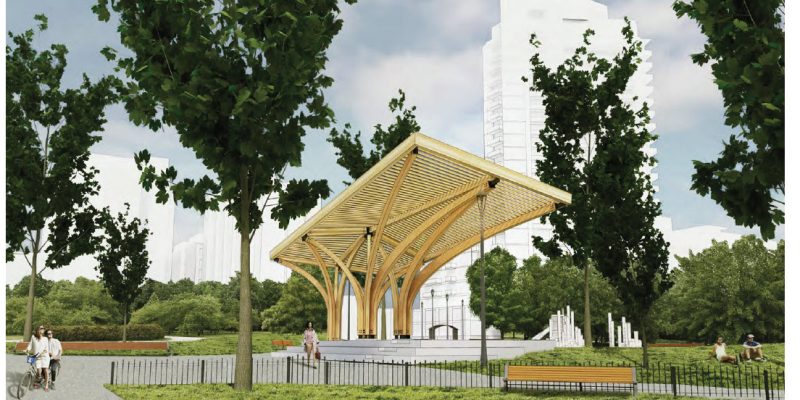

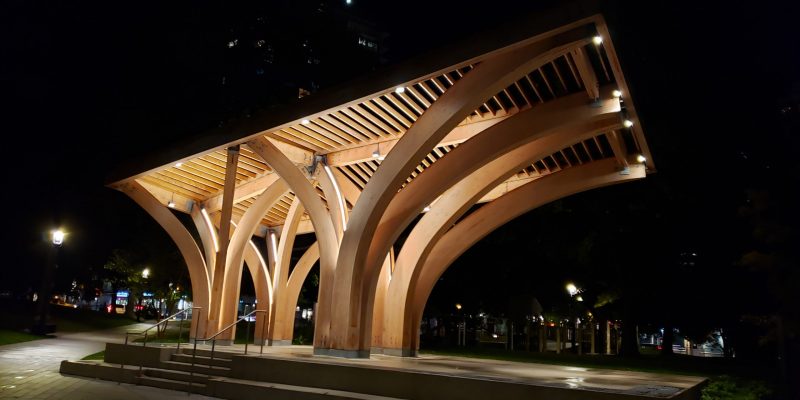
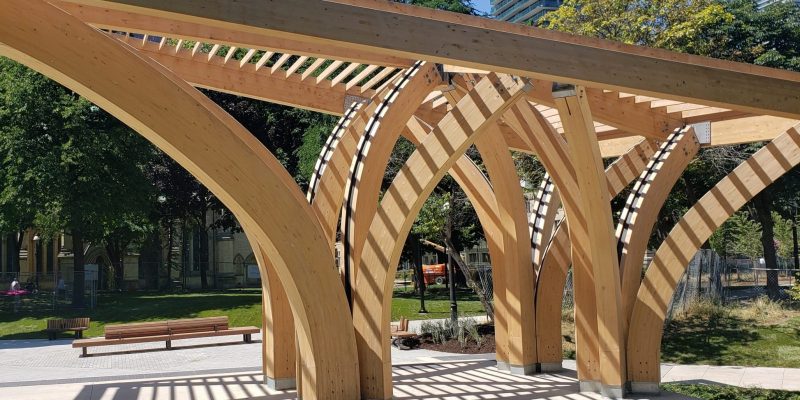
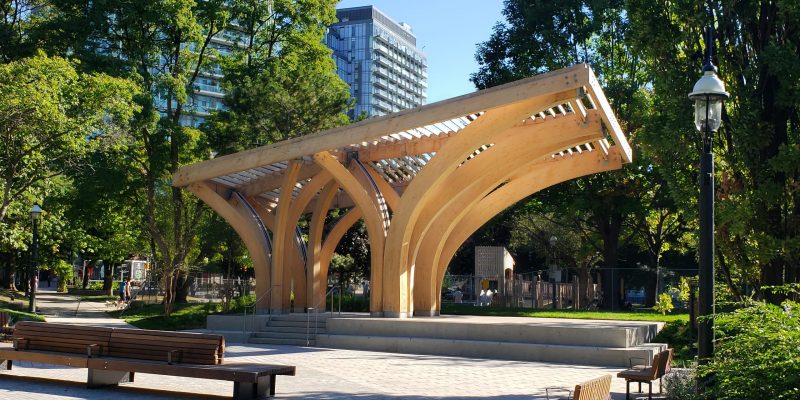

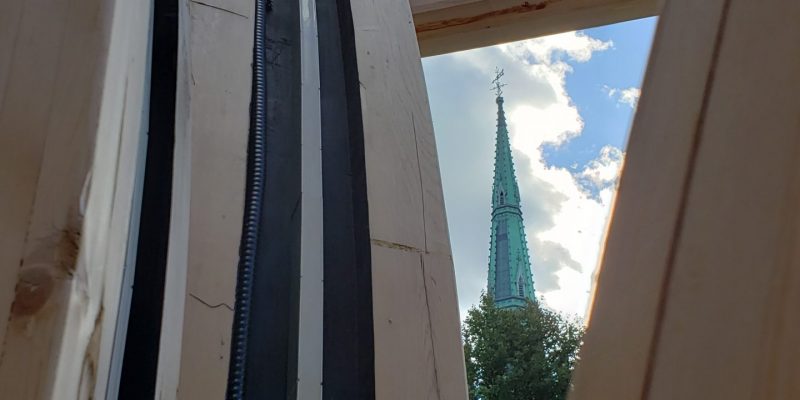
Thanks for the analysis. I enjoyed rhe reading.
Me finding and reading this article seems somewhat timely…as I literally just ran through the pavilion this morning and as I stopped on the pavilion stretch I got the most beautiful view of the St James Cathedral…which is not only framed by the arch of the pavilion but mimics the shape of the Windows as the article above mentions. It is a beautiful persepctive of the piece to see – being about to look from the inside out. I would highly recommend!